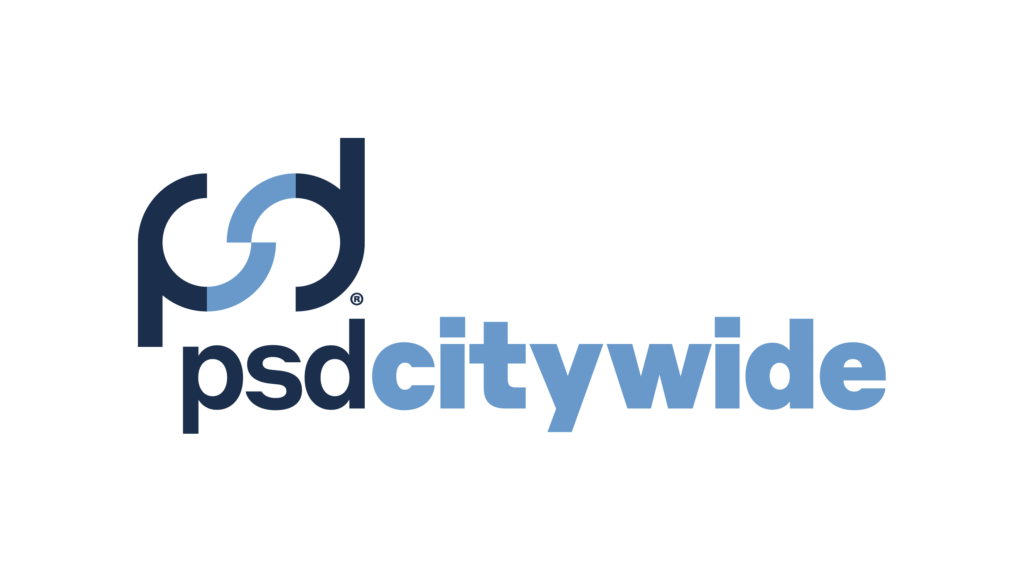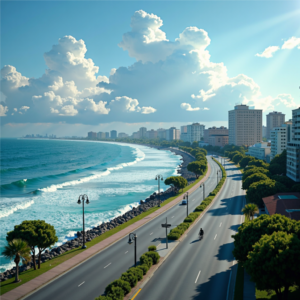The Investing in Canada Plan (ICIP) is investing $180 billion over 12 years in four overarching areas: public transit, green infrastructure, social infrastructure and rural and northern communities. These investments have allowed for municipalities to undertake significant capital projects that are addressing long-term infrastructure issues and bringing innovative solutions to emerging areas.
Each province has taken their own approach to distributing their respective funds, either through allocation or grant programs. Many provinces have closed their call for applications for the 2019-2020 year for various project streams. However, the program continues to reopen on an annual basis in many jurisdictions, with each province prioritizing various projects within the differing areas each year (i.e. broadband connectivity, GHG reductions, Light Rail Technology (LRT), etc.).
It is important to note that while the four streams make up a large portion of the allocated funding, there are other grant programs and direct funding that this fund encompasses outside of the provincial priorities (e.g. Clean Water and Wastewater Fund, Public Transit Infrastructure Fund, Arctic Energy Fund, etc.). Each province’s approach under the four streams for the 2018- 2020 intake(s) will be outlined in the subsequent sections.
Eligibility (across provinces)
- Provincial government (i.e. Government of Alberta, Ontario, etc.)
- Public sector bodies (wholly owned by the respective province)
- Private sector bodies—both for profit and not-for profit organizations
- Municipal governments
- Indigenous ultimate recipients, including: a band council, a First Nation, Inuit or Metis government, a not-for-profit organization whose central mandate is to improve Indigenous outcomes
- For-profit organizations in collaboration with one more of the other above listed entities
ICIP Provincial and Federal Allocations
| Province | Public Transit | Green | Community, Culture, Recreation | Rural & Northern Communities |
|---|---|---|---|---|
| Ontario | $1.62 billion | $2.2 billion | $407 million | $625 million |
| Manitoba | $546 million | $451 million | $112 million | $61 million |
| Saskatchewan | $307.9 million | $416.3 million | $56.2 million | $115.9 million |
| Alberta | $2.1 billion | $1.25 billion | $140.6 million | $159.7 million |
| British Columbia | N/A | $903 million | $134 million | $95 million |
| Quebec | $5.1 billion | $1.8 billion | $257 million | $288 million |
| Nova Scotia | $289 million | $381 million | $51 million | $105 million |
| New Brunswick | $165.2 million | $347.2 million | $46.2 million | $114.6 million |
| Newfoundland & Labrador | $109.1 million | $302.4 million | $39.8 million | $104.6 million |
| PEI | $27 million | $228 million | $29 million | $82 million |
| Federal Allocation* | $20.1 billion—Allocation according to the following formula: ridership (70%) + population (30%) | $9.2 billion—Three substreams: (1) Climate Change Mitigation (2) Adaptation, Resilience and Disaster Mitigation (3) Environmental Quality | $1.3 billion—A base amount of $25 million is given to each province and territory, the remainder of the funds are available on a per capita basis. | $2.4 billion—A base amount of $75 million is given to each province and $150 million to each territory, the remainder of the funds are available on a per capita basis. |
*Approximate figures
Ontario
The Government of Ontario has been releasing information on the respective streams in stages, with some streams having allocated funds and others having a grant application process. The Rural and Northern Communities stream has now closed for applications.
*Note: Grant applications from Ontario require that applicants submit their asset management plans with their application and provide context around asset management maturity.
Federal Cost Sharing:
- Public Transit: 40% federal, 33.33% provincial, 26.67% municipal
- Green Infrastructure: TBD
- Community, Culture and Recreation Infrastructure: 40% federal, 33.33% provincial, 26.67% applicant
- Indigenous applicants: 75% federal, 18.33% provincial, 6.67% indigenous applicant
- Rural and Northern Communities Infrastructure:
| Municipality <5,000 | 60% federal, 33.33% provincial, 6.67% applicant |
| Municipality 5,000-10,000 | 50% federal, 33.33% provincial, 16.67% applicant |
| Indigenous Community <5,000 | 75% federal, 18.33% provincial, 6.67% applicant |
| Indigenous Community 5,000-10,000 | 75% federal, 8.33% provincial, 16.67% applicant |
Breakdown by Stream
PUBLIC TRANSIT
The deadline to submit an application for this stream is October 24, 2019. Eligible applicants include municipalities inside the Greater Toronto and Hamilton Area (GTHA), which receive Provincial Gas Tax funding and reported ridership to the Canadian Urban Transit Association (CUTA).
Eligible Projects:
- Improved capacity of public transit infrastructure
- Improved quality and/or safety of existing or future transit systems
- Improved access to a public transit system
GREEN INFRASTRUCTURE
The Government of Ontario has yet to release information on deadlines or eligibility for the intake of this
stream.
COMMUNITY, CULTURE AND RECREATION INFRASTRUCTURE
The deadline to submit an application for this stream is November 12, 2019. This stream will focus on improving access and/or quality of community, cultural and recreation infrastructure.
Eligible Projects:
This intake will focus on two project types:
1. Multi-Purpose Category
This category focuses on the principal of integrated service delivery to address identified service gaps.
Eligible projects include:
- New build/construction projects
- Larger scale renovation
- Expansion of existing facilities
2. Rehabilitation and Renovation Category
This category focuses on maximizing the funding impact of small-scale projects that would improve the condition of existing facilities.
Eligible projects include:
- Renovation and rehabilitations to address functionality and use of existing facilities
- Small-scale improvements to address accessibility (e.g., handrails, ramps, accessible doors/parking/elevators, wayfinding and signage etc.)
- Small new build / construction projects of recreation, cultural or community centre infrastructure (e.g., playing fields, tennis courts, small community squares)
RURAL AND NORTHERN COMMUNITIES INFRASTRUCTURE
The call for applications for this intake closed on May 14, 2019. Applicants were able to submit an application for a capital project on road, bridge, air and/or marine infrastructure. The projects were required to be new construction, rehabilitation or replacement work.
Manitoba
The Government of Manitoba has now closed the call for applications for the respective streams.
Federal Cost Sharing:
- Public Transit: 40% federal, 33.33% provincial, 26.67% municipal
- Rehab projects: 50% with 33.33% from the province
- New construction: 40% with 33.33% from the province
- Green Infrastructure:
- Provincial assets: 50% with 50% from the province
- Municipal: 40% with 33.33% from the province
- Not-for-profit: 40%
- Indigenous: 75%
- For-profit private sector: 25%
- Community, Culture and Recreation Infrastructure:
- Provincial assets: 50% with 50% from the province
- Municipal: 40% with 33.33% from the province
- Not-for-profit: 40%
- Indigenous: 75%
- Rural and Northern Communities Infrastructure:
- Provincial assets; 50% with 50% from the province
Breakdown by Stream
PUBLIC TRANSIT
This stream is allocated directly through the Manitoba Strategic Infrastructure Secretariat. The aim of this stream is to improve the capacity of public transit infrastructure, improve the quality and safety of existing and future transit system, and improve access to the public transit systems.
GREEN INFRASTRUCTURE
This stream is being distributed through grant agreements, with applications having been due on September 12, 2019. Eligible projects for this stream are encompassed by the three overarching sub streams.
Eligible Projects:
1. Climate Change Mitigation
- Increased capacity to manage more renewable energy
- Increased access to clean energy transportation
- Increased generation of clean energy
- Increased energy efficient buildings
2. Adaptation, Resilience and Disaster Mitigation
Increased structural capacity to adapt to climate change impacts, natural disasters and extreme weather events
Increased natural capacity to adapt to climate related impacts, natural disasters and extreme weather events
3. Environmental Quality
- Increased capacity to treat and manage wastewater and stormwater
- Increased access to potable water
- Increased capacity to reduce or remediate soil and air pollutants
COMMUNITY, CULTURE AND RECREATION INFRASTRUCTURE
This stream is being distributed through grant agreements, with applications having been due on September 19, 2019.
Eligible Projects:
- Improved access to and increased quality of community, culture and recreation infrastructure for Canadians, including Indigenous people and vulnerable populations
RURAL AND NORTHERN COMMUNITIES INFRASTRUCTURE
This stream is being distributed through grant agreements, with applications having been due on September 26, 2019.
Eligible Projects:
Projects must meet at least one of the following outcomes:
- Improved food security
- Improved and more reliable road, air and marine infrastructure
- Improved broadband connectivity
- More efficient and reliable energy
- Improved education and health facilities
Saskatchewan
The Government of Saskatchewan accepted an expression of interest until April 30, 2019. However, a more detailed application intake is expected in late 2019.
Federal Cost Sharing:
- Municipal Governments: 40% with 33.33% from the province
- Non-profit: 40% with 33.33% from the province
- Indigenous: 75% with 25% from the province
- Private (for-profit): 25% with 0% from the province
Breakdown by Stream
The Province has not determined the full parameters of each stream and the amount that will be allocated or given through grant agreements. The results from the expression of interests will provide the Province with more context around project priorities.
PUBLIC TRANSIT
The funds are aimed to help build new urban transit networks and service extensions and to upgrade existing systems to improve the way that citizens live, move and work.
GREEN INFRASTRUCTURE
The funds are aimed to support the reduction of GHG emissions, decrease the release of pollutants into the environment, ensure that more communities can provide clean air and safe drinking water, and enable greater adaptation and resilience to the impacts of climate change and climate-related disaster mitigation.
COMMUNITY, CULTURE AND RECREATION INFRASTRUCTURE
The funds are aimed to help build stronger communities and improve social inclusion.
RURAL AND NORTHERN COMMUNITIES INFRASTRUCTURE
The funds are aimed to address specific rural and northern needs.
Alberta
The Government of Alberta accepted an expression of interest for proposed projects up until July 31, 2019 for this funding round. However, the next intake is expected to open in Spring 2020. The province expects to have federal approvals in place for the approved projects by Spring/Summer 2020.
Federal Cost Sharing:
- Municipal, for-profit organizations, postsecondary institutions and public bodies: 40% (a provincial cost share of 33.3% is required for municipal projects)
- Government of Alberta: 50%
- Indigenous: 75%
- Private sector, for-profit organizations (not eligible under Community, Culture and Recreation stream): 25%
- Rural and Northern Communities:
- Up to 60% for municipalities with a population less than 5,000; and
- Up to 50% for provincial, municipalities (population 5,000+), not-for-profits, postsecondary institutions, and public body
projects
Breakdown by Stream
PUBLIC TRANSIT
Projects under the public transit stream are managed through Alberta Transportation and the funding is allocated to municipalities with the Regional Transit Authorities. The foremost focus of this stream will be to improve and expand public transit systems, with the primary objective being new construction. Rehabilitation projects are capped at 15% of total funding for the stream.
Eligible Projects:
- Improved capacity of public transit infrastructure (e.g. new buses, light rail transit, etc.)
- Improved quality and/or safety of existing or future transit systems (e.g. incorporating bike lanes and walking paths)
- Improved access to a public transit system (e.g. low floor buses, barrier free stations, etc.)
GREEN INFRASTRUCTURE
Projects will generally be distributed through grant programs and will fit under the three sub streams:
1. Climate Change Mitigation
Eligible Projects
- Increased capacity to manage more renewable energy
- Increased access to clean energy transportation
- Increased energy efficiency of buildings
- Increased generation of clean energy
2. Adaptation, Resilience, and Disaster Mitigation
Eligible Projects
- Increased structural capacity and/or increased natural capacity to adapt to climate change impacts, natural disasters, and/or extreme weather events
3. Environmental Quality
Eligible Projects
- Increased capacity to treat and/or manage wastewater and stormwater
- Increased access to potable water
- Increased capacity to reduce and/or remediate soil and/or air pollutants
COMMUNITY, CULTURE AND RECREATION INFRASTRUCTURE
Projects will generally be distributed through grant programs and will be aimed at facilities supporting vulnerable populations. A minimum of $21.5 million must be used to address infrastructure investment needs of Alberta’s Indigenous populations living off-reserve.
Eligible Projects:
- Must provide improved public access to and/or increased quality of cultural, recreational, and/or community infrastructure for Albertans, including Indigenous people and vulnerable populations
RURAL AND NORTHERN COMMUNITIES INFRASTRUCTURE
Projects will generally be distributed through grant programs and must be in communities with a population of 100,000 or less.
Eligible Projects (projects must provide the following outcomes):
- Improve food security
- Improve and provide more reliable road, air, and marine infrastructure
- Improve broadband activity
- Provide more efficient and reliable energy
- Improve education and health facilities
British Columbia
The Government of British Columbia (BC) has now closed the call for applications for the respective streams.
Federal Cost Sharing:
- Green Infrastructure/Community, Culture and Recreation Infrastructure: 40% federal, 33.33% provincial
- Indigenous applicants: 75% federal
- Rural and Northern Communities Infrastructure:
| Local governments 5,000-25,000 | 50% federal, 40% provincial |
| Local governments <5,000 | 60% federal, 40% provincial |
| Indigenous Ultimate Recipients-On-Reserve | 75% federal |
| Indigenous Ultimate Recipients-Off-Reserve | 75% federal, 25% provincial |
Breakdown by Stream
PUBLIC TRANSIT
The Province has not released information on the parameters or funding allocations for this stream.
GREEN INFRASTRUCTURE
The Province released funds for two of the sub streams through two separate grant programs:
1. Climate Change Mitigation—CleanBC Communities Fund:
The application deadline for this fund was March 27, 2019. Final decisions for the fund are anticipated in late 2019/early 2020.
Eligible Projects:
- Increased capacity to manage renewable energy
- Increased access to clean-energy transportations
- Increased energy efficiency of buildings
- Increase generation of clean energy
2. Environmental Quality—Environmental Quality Program:
The application deadline for the first intake was August 29, 2018. Applications are currently under review.
The second intake opens on October 30, 2019. Deadline for submission is February 26, 2020.
Eligible Projects:
- Increased capacity to treat and/or manage wastewater and stormwater
- Increased access to potable water
- Increased capacity to reduce and/or remediate soil and/or air pollutants
COMMUNITY, CULTURE AND RECREATION INFRASTRUCTURE
The application deadline for this stream was January 23, 2019. Final decisions are anticipated in late 2019.
Eligible Projects:
Eligible projects must support public infrastructure, designed as tangible capital assets primarily for public use or benefit. They must meet the following outcome:
- Improved access to and/or increased quality of cultural, recreational and/or community infrastructure for Canadians, including Indigenous peoples and vulnerable populations.
RURAL AND NORTHERN COMMUNITIES INFRASTRUCTURE
The application deadline for this stream was January 23, 2019. Final decisions are anticipated in late 2019.
Eligible Projects (projects must provide the following outcomes):
- Improve food security
- Improve and provide more reliable road, air, and marine infrastructure
- Improve broadband activity
- Provide more efficient and reliable energy
- Improve education and health facilities
Nova Scotia
The Government of Nova Scotia has not indicated a specific deadline for the respective streams.
Federal Cost Sharing:
- Public Transit:
- All funds went to four ultimate recipients
- Green Infrastructure:
- Province: 50% federal
- Municipalities, not-for-profits: 40% federal
- Indigenous: 75% federal
- For-profit, private sector: 25% federal
- Community, Culture, and Recreation Infrastructure:
- Province: 50% federal
- Municipalities, not-for-profits: 40% federal
- Indigenous: 75% federal
- Rural and Northern Communities Infrastructure:
- Province, municipalities >5,000, not-for-profits: 50% federal
- Regional governments or municipalities <5,000: 60% federal
- Indigenous: 75% federal
- For-profit, private sector: 25%
Breakdown by Stream
PUBLIC TRANSIT
The Government of Nova Scotia allocated the full funding from this stream to four ultimate recipients based on ridership: Halifax, King’s Transit (Kentville), Transit Cape Breton-Sydney, Yarmouth.
GREEN INFRASTRUCTURE
Projects under this stream must adhere to the above discussed sub streams: Climate Change Mitigation, Adaptation, Resilience and Disaster Mitigation Outcomes, and Environmental Quality.
1. Climate Change Mitigation:
Eligible Projects:
- Increased capacity to manage renewable energy
- Increased access to clean-energy transportations
- Increased energy efficiency of buildings
- Increase generation of clean energy
2. Environmental Quality:
Eligible Projects:
- Increased capacity to treat and/or manage wastewater and stormwater
- Increased access to potable water
- Increased capacity to reduce and/or remediate soil and/or air pollutants
3. Adaptation, Resilience and Disaster Mitigation Outcomes:
- Increased structural capacity and/or increased natural capacity to adapt to climate change impacts, natural disasters and/or extreme weather events
COMMUNITY, CULTURE AND RECREATION INFRASTRUCTURE
Eligible Projects:
- Improved access to and/or increased quality of cultural, recreational and/or community infrastructure for Canadians, including Indigenous peoples and vulnerable populations.
RURAL AND NORTHERN COMMUNITIES INFRASTRUCTURE
Eligible Projects (projects must provide the following outcomes):
- Improve food security
- Improve and provide more reliable road, air, and marine infrastructure
- Improve broadband activity
- Provide more efficient and reliable energy
- Improve education and health facilities
New Brunswick
The Government of New Brunswick has not indicated a specific deadline for the respective streams.
Federal Cost Sharing:
- Public Transit:
- New construction/expansion: 40% federal
- Rehabilitation: 50% federal
- Private sector: 25% federal
- Green Infrastructure:
- Province: 50% federal
- Municipalities, regional governments, not-for profits: 40% federal
- Indigenous: 75% federal
- For-profit, private sector: 25% federal
- Community, Culture, and Recreation Infrastructure:
- Province: 50% federal
- Municipalities, regional governments, not-for profits: 40% federal
- Indigenous: 75% federal
- Rural and Northern Communities Infrastructure:
- Province, municipalities >5,000, not-for-profits: 50% federal
- Municipalities <5,000: 60% federal
- Indigenous: 75% federal
- For-profit, private sector: 25%
Breakdown by Stream
PUBLIC TRANSIT
Funding under this stream has been allocated specifically for Moncton, Saint John, Fredericton and Miramichi.
GREEN INFRASTRUCTURE
Projects under this stream must adhere to the above discussed sub streams: Climate Change Mitigation, Adaptation, Resilience and Disaster Mitigation Outcomes, and Environmental Quality.
1. Climate Change Mitigation:
Eligible Projects:
- Increased capacity to manage renewable energy
- Increased access to clean-energy transportation
- Increased energy efficiency of buildings
- Increase generation of clean energy
2. Environmental Quality:
Eligible Projects:
- Increased capacity to treat and/or manage wastewater and stormwater
- Increased access to potable water
- Increased capacity to reduce and/or remediate soil and/or air pollutants
3. Adaptation, Resilience and Disaster Mitigation Outcomes:
- Increased structural capacity and/or increased natural capacity to adapt to climate change impacts, natural disasters and/or extreme weather events
COMMUNITY, CULTURE AND RECREATION INFRASTRUCTURE
Eligible Projects:
- Improved access to and/or increased quality of cultural, recreational and/or community infrastructure for Canadians, including Indigenous peoples and vulnerable populations.
RURAL AND NORTHERN COMMUNITIES INFRASTRUCTURE
Eligible Projects (projects must provide the following outcomes):
- Improve food security
- Improve and provide more reliable road, air, and marine infrastructure
- Improve broadband activity
- Provide more efficient and reliable energy
- Improve education and health facilities
Newfoundland and Labrador
The Government of Newfoundland and Labrador has not indicated specific deadlines for the respective streams.
Federal Cost Sharing:
- Public Transit:
- New construction: 40% federal, 33.33% provincial, 26.67 municipal
- Green Infrastructure:
- Population <3,000: 40% federal, 50% provincial 10% municipal
- Population 3,000-7,000: 40% federal, 40% provincial, 20% municipal
- Population >7,000: 40% federal, 30% provincial, 30% municipal
- Community, Culture, and Recreation Infrastructure:
- All populations: 33.33% federal, 33.33% provincial, 33.33% municipal
- Rural and Northern Communities Infrastructure:
- Populations <100,000: 33.33% federal, 33.33% provincial, 33.33% municipal
Breakdown by Stream
PUBLIC TRANSIT
The Government of Newfoundland and Labrador has made the funds for this stream available to St. John’s and Corner Brook to improve capacity, quality or access to existing public transit networks.
GREEN INFRASTRUCTURE
Projects under this stream must adhere to the above discussed sub streams: Climate Change Mitigation, Adaptation, Resilience and Disaster Mitigation Outcomes, and Environmental Quality.
1. Climate Change Mitigation:
Eligible Projects:
- Increased capacity to manage renewable energy
- Increased access to clean-energy transportation
- Increased energy efficiency of buildings
- Increase generation of clean energy
2. Environmental Quality:
Eligible Projects:
- Increased capacity to treat and/or manage wastewater and stormwater
- Increased access to potable water
- Increased capacity to reduce and/or remediate soil and/or air pollutants
3. Adaptation, Resilience and Disaster Mitigation Outcomes:
- Increased structural capacity and/or increased natural capacity to adapt to climate change impacts, natural disasters and/or extreme weather events
COMMUNITY, CULTURE AND RECREATION INFRASTRUCTURE
Eligible Projects:
- Improved access to and/or increased quality of cultural, recreational and/or community infrastructure for Canadians, including Indigenous peoples and vulnerable populations.
RURAL AND NORTHERN COMMUNITIES INFRASTRUCTURE
Eligible Projects (projects must provide the following outcomes):
- Improve food security
- Improve and provide more reliable road, air, and marine infrastructure
- Improve broadband activity
- Provide more efficient and reliable energy
- Improve education and health facilities
Prince Edward Island
The Government of PEI closed their call for applications on April 26, 2019.
Federal Cost Sharing:
- Public Transit:
- Allocated directly through the Infrastructure Secretariat
- Green Infrastructure:
- For profit: 25% federal
- Province: 50% federal, 50% provincial
- Municipal: 40% federal, 33.33% provincial, 26.67% applicant
- Not-for-profit: 40% federal, 33.33% provincial, 26.67% applicant
- Indigenous: 75% federal
- Community, Culture, and Recreation Infrastructure:
- Provincial applicants: 50% federal, 50% provincial
- Municipal applicants: 40% federal, 33.33% provincial
- Not-for-profit: 40% federal, 33.33% provincial
- Indigenous applicants: 75% federal
- Rural and Northern Communities Infrastructure:
- For profit: 25% federal
- Province: 50% federal, 50% provincial
- Municipal >5,000 <30,000: 50% federal, 33.33% provincial, 16.67% applicant
- Municipal <5,000: 60% federal, 33.33% provincial, 6.67% applicant
- Not-for-profit: 50% federal, 33.33% provincial, 33.33% applicant
- Indigenous: 75% federal
Breakdown by Stream
PUBLIC TRANSIT
Funding through this stream is allocated directly through the Infrastructure Secretariat.
GREEN INFRASTRUCTURE
Projects under this stream must adhere to the above discussed sub streams: Climate Change Mitigation, Adaptation, Resilience and Disaster Mitigation Outcomes, and Environmental Quality.
1. Climate Change Mitigation:
Eligible Projects:
- Increased capacity to manage renewable energy
- Increased access to clean-energy transportation
- Increased energy efficiency of buildings
- Increase generation of clean energy
2. Environmental Quality:
Eligible Projects:
- Increased capacity to treat and/or manage wastewater and stormwater
- Increased access to potable water
- Increased capacity to reduce and/or remediate soil and/or air pollutants
3. Adaptation, Resilience and Disaster Mitigation Outcomes:
- Increased structural capacity and/or increased natural capacity to adapt to climate change impacts, natural disasters and/or extreme weather events
COMMUNITY, CULTURE AND RECREATION INFRASTRUCTURE
Eligible Projects:
- Improved access to and/or increased quality of cultural, recreational and/or community infrastructure for Canadians, including Indigenous peoples and vulnerable populations.
RURAL AND NORTHERN COMMUNITIES INFRASTRUCTURE
Eligible Projects (projects must provide the following outcomes):
- Improve food security
- Improve and provide more reliable road, air, and marine infrastructure
- Improve broadband activity
- Provide more efficient and reliable energy
- Improve education and health facilities



